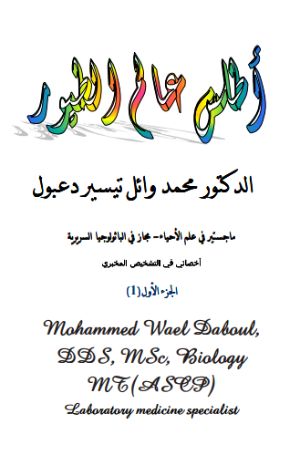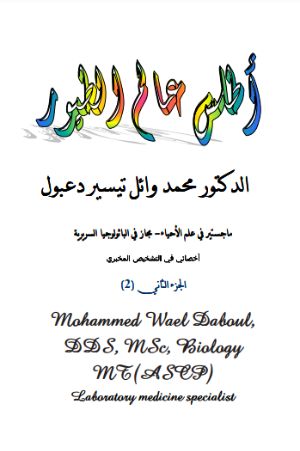
Atlas of World Mammals Volume (1) by محمد وائل دعبول ......Mammals are animals with mammary gland, that is a class of vertebrate animals that produce milk for infants. They are also characterized by warm blooded bodies and the presence of hair or fur. Mammals have three characteristics: -they have breasts, -their skin with some exceptions (are covered with hair), and they breed with offspring. .. The most prevalent mammals, which live in all environments, on land and in water and air, which are the most important: 1 - Insectivore: Includes the molds (single-mole) and hedgehogs and shrews, which feed on insects. Shrew is one of the smallest living mammals, as some weigh less than five grams only. 2 - Bat (flying mammals) Chiropterans: A mammal capable of flying by connection of fingers of the front ends to each other with a skin membrane connected to the legs and body in the form of a wing. They feed on insects and fruits, but some feed on blood of other animals. The bats sense their surroundings by producing ultrasonic vibrations that bounce back, collected and recognized exploring the conditions around them. 3 - Carnivores: Includes cats, dogs, wolves, foxes, bears and sea lions. All are carnivores with sharp pointed teeth and torn molars. 4 - Rodents: this includes squirrels, mice, rats, hamsters and Indian pigs. They have sharp chisel-like cutters front teeth. 5 - Edentate: This includes anteater and armor (Armadillo). They do not have teeth. 6 - diodes Artiodactyls: which includes sheep, goats, pigs, giraffes and deer. They are herbivores with hooves, double-fingered. 7 – Single-fingers Perissodactyla: It includes horses and donkeys, the beast, (zebra), tapir and rhino (rhinoceros). They are herbivores with hooves but single-finger. 8- Proboscides include elephants and mammoths. They have a long muscular hose and long fangs (elephant ivory). They are the largest animals, and may weigh up to 7 tons. 9. Sirenia: mammals that are almost in the process of extinction. The front ends resembles fins and they are without rear limbs. They lives in water including manatees. 10- Cetacean: Includes whales and dolphins. They are marine mammals, with a fish-shaped body, and their fronts resemble fins and without back limbs. Their body is covered by a thick layer of fatty substance. The largest among them is the blue whale, which can be up to 30 meters long and weighs 135 tons. 11- Primates: lemurs, chimpanzees, monkeys, apes and humans. They have complex brains and eyes with fingernails instead of claws, and the thumbs of the hands or legs meet with the rest of the fingers, and their eyes are facing forward. B - marsupials and most seen in the continent of Australia, and some are found in South America and examples of marsupial animals Kangaroos and koala bears and wombat animals. There are about 80 species of opossum, a bursa, living in Central and South America. C- Monoterms: Unlike other mammalian species, animals do not give birth to live young, but lay egg shells, which hatch after the end of the incubation period. This group includes only ants and platypus, which live in Australia, New Guinea and Tasmania.
Atlas of World Mammals Volume (1) by محمد وائل دعبول ......Mammals are animals with mammary gland, that is a class of vertebrate animals that produce milk for infants. They are also characterized by warm blooded bodies and the presence of hair or fur. Mammals have three characteristics: -they have breasts, -their skin with some exceptions (are covered with hair), and they breed with offspring. .. The most prevalent mammals, which live in all environments, on land and in water and air, which are the most important: 1 - Insectivore: Includes the molds (single-mole) and hedgehogs and shrews, which feed on insects. Shrew is one of the smallest living mammals, as some weigh less than five grams only. 2 - Bat (flying mammals) Chiropterans: A mammal capable of flying by connection of fingers of the front ends to each other with a skin membrane connected to the legs and body in the form of a wing. They feed on insects and fruits, but some feed on blood of other animals. The bats sense their surroundings by producing ultrasonic vibrations that bounce back, collected and recognized exploring the conditions around them. 3 - Carnivores: Includes cats, dogs, wolves, foxes, bears and sea lions. All are carnivores with sharp pointed teeth and torn molars. 4 - Rodents: this includes squirrels, mice, rats, hamsters and Indian pigs. They have sharp chisel-like cutters front teeth. 5 - Edentate: This includes anteater and armor (Armadillo). They do not have teeth. 6 - diodes Artiodactyls: which includes sheep, goats, pigs, giraffes and deer. They are herbivores with hooves, double-fingered. 7 – Single-fingers Perissodactyla: It includes horses and donkeys, the beast, (zebra), tapir and rhino (rhinoceros). They are herbivores with hooves but single-finger. 8- Proboscides include elephants and mammoths. They have a long muscular hose and long fangs (elephant ivory). They are the largest animals, and may weigh up to 7 tons. 9. Sirenia: mammals that are almost in the process of extinction. The front ends resembles fins and they are without rear limbs. They lives in water including manatees. 10- Cetacean: Includes whales and dolphins. They are marine mammals, with a fish-shaped body, and their fronts resemble fins and without back limbs. Their body is covered by a thick layer of fatty substance. The largest among them is the blue whale, which can be up to 30 meters long and weighs 135 tons. 11- Primates: lemurs, chimpanzees, monkeys, apes and humans. They have complex brains and eyes with fingernails instead of claws, and the thumbs of the hands or legs meet with the rest of the fingers, and their eyes are facing forward. B - marsupials and most seen in the continent of Australia, and some are found in South America and examples of marsupial animals Kangaroos and koala bears and wombat animals. There are about 80 species of opossum, a bursa, living in Central and South America. C- Monoterms: Unlike other mammalian species, animals do not give birth to live young, but lay egg shells, which hatch after the end of the incubation period. This group includes only ants and platypus, which live in Australia, New Guinea and Tasmania.
المزيد...

























